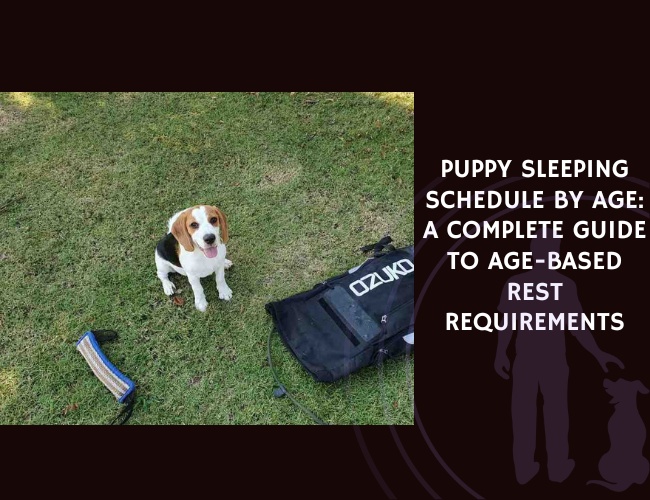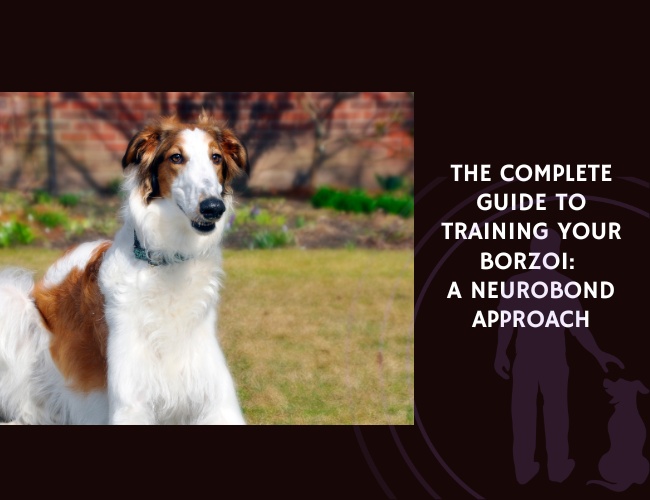Introduction: Understanding Puppy Sleep Needs
Why Sleep Matters for Puppies
Welcoming a puppy into your life is filled with excitement and new responsibilities. One of the most important yet overlooked needs is sleep. Puppies require more sleep than adult dogs because their bodies and brains are developing rapidly. Adequate rest is crucial for physical growth, immune system strength, and emotional regulation. Sleep helps your puppy recharge, process experiences, and face new challenges each day with energy and curiosity 🐾.
Changing Sleep Patterns as Puppies Grow
Sleep patterns in puppies shift as they mature. At first, very young puppies can sleep up to 20 hours a day. These long sleep hours are not just laziness—they support healthy brain development and help puppies learn from their surroundings. As puppies grow, their total sleep time decreases, and their rest becomes more concentrated at night with fewer long naps during the day. This transition reflects changes in their growing brains and bodies.
The Science Behind Puppy Sleep
There is fascinating science behind these sleep needs. During sleep, especially in the rapid eye movement (REM) stage, puppies’ brains consolidate memories and practice new skills they learned while awake. Studies in mammals show that more REM sleep in early life supports better learning and behavior later. Puppies naturally spend more time in REM sleep when young, which gradually decreases as they get older.
When puppies don’t get enough sleep, you may notice crankiness, difficulty focusing during training sessions, and even increased sensitivity to stress. This is because proper sleep helps manage their emotional responses and overall well-being.
Sleep truly shapes your puppy’s ability to learn, interact, and grow. By understanding your puppy’s sleep requirements, you’re giving them the best start possible. Now, let’s explore how these patterns affect their development and day-to-day life.
The Science of Puppy Sleep: Brain Development and Learning
REM Sleep and Memory in Puppies
Sleep isn’t just downtime for your puppy—it’s an active time for their brain. Rapid eye movement (REM) sleep is especially important. During REM, your puppy’s brain is busy filing away new memories and the skills learned from daily play and training. This special stage helps strengthen connections in the brain so your puppy can better understand commands, remember routines, and try out new abilities when awake. Just like in human children, REM sleep supports learning and helps puppies adapt to their brand-new world.
How Sleep Changes as Puppies Grow
Sleep patterns in puppies are very different from those in adult dogs. Young puppies, especially those between two and twelve weeks old, spend much more time in REM sleep. As weeks pass and puppies reach twenty-four weeks, their sleep starts to shift. They get less REM sleep and more non-REM sleep, which is deeper and less active. This change is natural and signals your puppy’s maturing brain. Daytime naps become a little shorter, and nighttime sleep stretches longer, matching the steady growth of their bodies and minds.
The Link Between Sleep and Brain Growth
Proper sleep does more than just help your puppy shake off the day—it’s vital for healthy brain development. Memory consolidation, emotional control, and learning depend on restful sleep. Puppies who don’t get enough rest may become more sensitive to stress and struggle with training. Over time, a well-rested puppy is more likely to be curious, confident, and eager to learn new things. Overtired puppies, on the other hand, are often cranky, impulsive, and less able to digest new experiences.
Support your puppy’s sleep to set a solid foundation for learning and healthy growth. With the right rest, each day brings new discoveries, and your puppy becomes more ready for the adventures ahead. 💤
Sleep Duration by Age: How Much Rest Do Puppies Need?
Sleep Requirements from 8–12 Weeks
During the first few months, your puppy will likely spend most of the day sleeping—up to 18–20 hours out of every 24! 💤 At this age, puppies are growing rapidly, both in body and brain, so this much sleep is absolutely normal and very important for healthy development. You might notice your puppy falling asleep after playtime or even during quiet moments. Frequent naps scattered throughout the day are common and help prevent your little one from becoming overtired or cranky.
Sleep Needs for 3–6 Months
Once your puppy hits the 3–6 month stage, you can expect their sleep needs to drop a bit, typically falling between 14–16 hours each day. This period is marked by bursts of energy, more curiosity, and longer play sessions. Even though they will spend more time awake, those long naps are still essential. Good nap routines help maintain emotional balance and make learning new skills easier.
Gradual Decrease as Puppies Approach Adulthood
As your dog edges closer to adulthood, the amount of daily sleep gradually tapers off. However, individual sleep needs vary, depending on the puppy’s personality, activity level, and routine. Most adult dogs sleep about 12–14 hours daily. It’s natural to see this shift happen slowly as your puppy grows, with nighttime sleep becoming more consolidated and daytime naps getting shorter and less frequent.
Creating steady sleep routines at each age not only boosts your puppy’s mood and energy, but also supports their ability to learn and adapt. A flexible, observant approach ensures your furry friend gets exactly what they need—setting the stage for well-rested, happy days ahead.

Daytime vs. Nighttime Sleep: Finding the Right Balance
Understanding Sleep Distribution
Puppies’ sleep patterns shift greatly as they grow. For the first three months, most puppies need 18–20 hours of rest every day. This large amount of sleep is not taken all at once. Younger puppies sleep in short bursts, spreading rest across both nighttime and the day. These frequent naps allow their brains and bodies to process new experiences and recover from play.
As puppies mature past 12 weeks, they slowly start sleeping more at night and taking fewer naps during the day. By six months, many puppies are able to sleep through the night and need only a few daytime naps. This change is part of their natural development and shows healthy brain growth.
Age-Appropriate Napping Schedules
Younger puppies (under 12 weeks) need several naps throughout the day. You may notice your puppy falling asleep after play, meals, or even short walks. It is important to let them nap whenever they appear tired. Typical nap frequency for younger puppies might be:
- 4–6 naps per day, each ranging from 30 minutes to 2 hours
- Longer nighttime rest, especially when the environment is quiet and dark
Letting your puppy nap often helps prevent overtiredness, which can lead to increased behavioral problems or difficulty learning.
Gradual Transition to Nighttime Sleep
Once your puppy reaches 3–6 months, naps shorten and nighttime sleep lengthens. This is a good time to encourage sleep at night by creating a predictable bedtime routine and reducing evening stimulation. Daytime naps may drop to 2–3 times per day.
Your role is to observe your puppy closely. Adjust nap times and bedtime if you notice signs of tiredness, like yawning, restlessness, or clumsy play. Providing a safe sleep environment and keeping a steady routine helps your puppy adjust to consolidated nighttime rest and supports their healthy development.
Small changes in sleep schedules can make a big difference in your puppy’s well-being. 💤
Signs of Sleep Deprivation in Puppies
Spotting the Signals Early
Understanding when your puppy is not getting enough sleep can make a world of difference to their health and happiness. Puppies cannot tell us they are tired, so it is essential to recognize the signs early. The most common indicators include sudden moodiness, frequent barking, whining, or even destruction of toys or bedding. You may also see your puppy pacing, having trouble settling down, or seeking extra comfort from you.
Behavioral Changes and Overtiredness
A tired puppy often becomes more hyperactive, not less. You might notice your puppy zooming around the house or yard, struggling to focus during training, or even jumping up and nipping more than usual. These behaviors can be confusing — many people think a playful puppy simply needs more playtime, but it may actually be overtired and in need of rest instead.
Some puppies also show increased aggression, like growling or snapping when handled. Trouble with housetraining or forgetting commands they have recently learned can also signal that sleep is lacking.
Emotional Reactivity and Stress
Sleep deprivation in puppies can lead to higher emotional sensitivity and stress. Just like humans, overtired puppies are easily startled and can seem anxious or restless. They might overreact to normal activities or noises. This can make it harder for puppies to adapt to changes, meet new people, or explore new places confidently.
Chronic lack of sleep may also slow their learning and emotional growth, as rest is essential for processing new experiences and storing memories.
Understanding these signs helps you tune into your puppy’s needs. By prioritizing rest, you support a healthier, better-adjusted companion ready for all the adventures to come! 🐶
Rest. Grow. Repeat.
Sleep builds more than rest—it builds the future.
Your puppy’s brain, body, and behaviour all depend on getting the right kind of sleep at the right age. From chaotic naps to deep overnight rest, each phase plays a vital role in growth and emotional balance.
Too little sleep, too many problems.
Overtired puppies can’t focus, learn, or settle. Their world becomes noisy and stressful. But with the right rhythm, they thrive—curious, calm, and ready to bond.



Know their needs, shape their rhythm.
This guide helps you decode how much rest your puppy really needs, and how to support it—age by age, stage by stage. Because healthy habits start with healthy sleep.
Creating an Optimal Sleep Environment
Setting up a Comfortable, Secure Space
Your puppy’s sleep health starts with where they rest. Puppies need a spot that feels safe, calm, and inviting. Choose a quiet area away from busy hallways or loud TVs. Soft bedding is important, but make sure it’s easy to clean. Some puppies love having a favorite blanket or soft toy for comfort. Their sleep space should be large enough to stretch but cozy enough to feel secure.
The Benefits of Crate Training
Crate training can be a wonderful tool for helping puppies settle into a routine. A properly introduced crate provides a “den-like” space where your puppy can relax and sleep soundly. The crate reduces distractions and prevents nighttime wandering. This predictability often leads to better sleep quality and helps you manage nap schedules. Remember to keep the crate positive by offering treats and making it a peaceful place—not a punishment.
Managing Environmental Factors
Puppies are very sensitive to their environment.
- Temperature: Ensure the sleeping area is not too hot or cold. Most puppies are comfortable at room temperature, so avoid direct drafts.
- Light: Dimming the lights during sleep times teaches your puppy when it’s time to unwind.
- Noise: Loud sounds can startle a young puppy awake. Try to limit sudden noises, and consider calm background sounds like soft music if your home is busy.
A calm sleep environment supports regular sleep patterns and helps prevent overtiredness. As your puppy grows, being mindful of these details will continue to help their rest and development. 😴
With a comfortable and secure environment, you are giving your puppy the best start for healthy sleeping habits. This foundation makes it easier to move toward a reliable daily routine that promotes their well-being.
Establishing a Healthy Sleep Routine
Creating a healthy sleep routine for your puppy offers a foundation for happy, calm behavior and strong growth 💤. While every puppy is unique, consistency is the key to helping your young companion settle into good sleep habits. Let’s explore what this means and why it matters.
Building a Predictable Daily Schedule
Puppies thrive on routines. Predictable schedules make the world feel safe and reliable. By sticking to set times for meals, play, toileting, and sleep, you support your puppy’s learning and help prevent overtiredness. As your puppy matures, you may notice they need fewer naps and more consolidated nighttime sleep. Adjusting their routine over time keeps their needs in focus.
A basic daily schedule for a young puppy might include:
- Morning wake-up and bathroom trip
- Play or a short walk
- Breakfast followed by a nap
- Playtime and training
- More naps through the day
- Evening downtime and bedtime at the same hour each night
The Role of Calming Activities Before Bed
Just like toddlers, puppies benefit from pre-sleep rituals. Simple calming activities signal that bedtime is approaching. Gentle petting, soft music, or a quiet game with a plush toy can ease your puppy’s mind and body. It’s helpful to avoid loud play or new training right before sleep, as excitement may make it harder for your puppy to settle down.
Adjusting the Routine As Your Puppy Grows
Sleep needs change quickly. Younger puppies (under 12 weeks) need more frequent naps, sometimes every 1-2 hours. As they approach six months, naps decrease and nighttime sleep stretches out. Regularly observe your puppy’s signs of tiredness, and don’t hesitate to adapt the sleep schedule to fit their changing needs.
Nurturing a solid routine means your puppy will learn when to rest and when to play, supporting their growth into a happy, well-adjusted dog.

Balancing Sleep with Other Daily Activities
Coordinating Sleep with Daily Needs
Helping your puppy thrive means building a daily schedule that balances sleep, feeding, play, training, and toilet breaks. Much like young children, puppies need routine and structure for healthy development. When organizing your puppy’s day:
- Schedule meals at the same times daily.
- Pair play or training sessions just after meals, when your puppy has more energy.
- Allow for toilet breaks after naps, meals, or play.
- Be sure to provide quiet time slots for naps throughout the day.
This approach gives your puppy’s body and mind predictable cues, making them feel safe and relaxed. A steady schedule helps you prevent overtiredness, which can make puppies uninterested in training, less playful, or even grumpy.
Recognizing When Your Puppy Needs a Nap
Puppies often don’t know when to rest, so it’s up to you to spot signs of tiredness. Watch for:
- Slower movements or lack of interest in play
- Yawning or droopy eyes
- Trouble focusing or irritability
- Suddenly biting or nipping more than usual
If you see these behaviors, guide your puppy to their nap spot for a break. Younger puppies need more frequent, shorter naps. As they mature, naps become less frequent but longer.
Preventing Overtiredness with a Balanced Schedule
Overtired puppies can become restless, hyper, or difficult to train. To keep your puppy refreshed:
- Stick to a daily routine and keep activities brief for young puppies.
- Provide a quiet, comfy nap area.
- Alternate active periods with rest.
Remember, good sleep doesn’t happen by accident—it’s part of a well-rounded day. Consistent routines and a keen eye on your puppy’s signals go a long way to supporting their growth and well-being.
Ready to help your puppy get even better rest? Let’s look at ways breed and size can shape individual sleep rhythms. 🐾
Breed-Specific Sleep Considerations
How Breed Size and Type Influence Sleep
Your puppy’s breed and size can shape their sleep needs in subtle but important ways. Smaller breeds often have higher metabolisms, which means they may nap more frequently throughout the day. In contrast, large breed puppies grow rapidly and experience more physical fatigue, often leading them to rest longer during each sleep period.
Working or herding breeds, such as border collies and German shepherds, generally have higher natural activity levels. These puppies need both more exercise and adequate sleep to recover from their bursts of energy. Meanwhile, companion breeds, like bichon frises or cavalier King Charles spaniels, might prefer snuggling and snoozing over chasing and fetching.
Understanding Breed-Specific Energy and Sleep Patterns
Different breeds have unique patterns in play and alertness. For example:
- Large, slow-maturing breeds (like Saint Bernards) often require more sleep to support their big bodies and slower development.
- Toy breeds (such as Yorkshire terriers) might do best with frequent, short naps to avoid overstimulation.
- Sporting and hunting breeds need intense activity, which can make them sleep soundly after active play, but their sleep might be shorter and more fragmented.
Recognizing these differences helps you spot when your puppy is either overtired or under-stimulated. Puppies who seem restless or irritable may need a change in their activity-sleep balance to stay happy and well-rested.
Adjusting Schedules to Meet Individual Needs
Adapting your puppy’s sleep routine to match their breed-specific needs is key for healthy development. Try these simple steps:
- Observe your puppy’s natural rhythms. Some will nap more in the afternoon, while others need regular rest after busy play times.
- Create a predictable routine, but be flexible. Adjust nap and bedtime based on how your puppy responds to activity and quiet time.
- Remember: no two puppies are exactly alike—even within the same breed!
Finding the right balance for your puppy leads to a happier, more relaxed companion. Next, let’s help you navigate solutions for common sleep challenges many puppy owners face. 🐶✨
Common Sleep Challenges and Solutions
Addressing Nighttime Waking and Separation Anxiety
It is common for puppies to wake up during the night, especially in new homes. They may feel anxious when separated from their litter or family. You can help your puppy by keeping their sleeping area close to you at night. Providing a soft blanket or a plush toy can also offer comfort. Crate training creates a safe, “den-like” environment that helps puppies feel secure when alone. If your puppy cries at night, try to stay calm and avoid giving immediate attention, as this can reinforce the behavior. Instead, check if your puppy needs to toilet or is uncomfortable. Consistent, gentle reassurance will help reduce stress and build confidence over time.
Strategies for Puppies Who Resist Napping or Bedtime
Some puppies have trouble settling down for naps or bedtime, especially when overtired. Signs of resistance include restlessness, barking, or refusal to enter their crate. If this sounds familiar, establishing clear, predictable routines can make a big difference. Encourage calming activities before naps, such as gentle petting or quiet time. Dim the lights and reduce noise in the environment to cue your puppy that it’s time to rest. Avoid active play or training sessions close to sleep periods, as these can make it harder for puppies to wind down.
Managing Sleep Disruptions During Developmental Milestones
Puppies experience growth spurts and changes in behavior as they develop. These milestones can temporarily disrupt sleep. For example, teething or learning new skills might cause your puppy to wake up more often or sleep less soundly. Adjust your routine as needed, offering extra comfort and patience during these phases. Remember, maintaining a balanced schedule and recognizing your puppy’s cues will support smoother transitions through growth and change.
Creating supportive solutions for common sleep challenges lays a strong foundation for your puppy’s ongoing health and happiness. 💤
Conclusion: Supporting Your Growing Puppy’s Sleep Needs
Your Key Takeaways for Puppy Sleep
As your puppy grows, their sleep needs transform. During their first months, puppies may require up to 20 hours of sleep daily. This high level of rest supports rapid brain development, physical growth, and learning new skills. As they approach six months, sleep gradually drops to around 14-16 hours per day. Each stage has its role in your puppy’s healthy development, which makes regular, quality sleep essential for emotional balance and behavior regulation.
Adapting to Change: Why Schedules Evolve
No two puppies are exactly the same, but all experience shifts in sleep as they mature. The progression from frequent daytime naps to more consolidated nighttime sleep is natural. This means your daily routines should also change. Watch for clues like fussiness, hyperactivity, or resistance to training—these can signal fatigue or overtiredness. Adjust nap times and bedtime to match your puppy’s age, size, and personality for the best results.
Final Tips for Healthy Puppy Sleep
To help your puppy thrive, keep routines simple and soothing. Provide a safe nap zone—like a crate or cozy bed—free from loud noises or bright lights. Stick to calm pre-sleep activities to make winding down easier. Remember, a predictable day that balances play, rest, and meals helps prevent stress and sleep issues. Trust your observations and make gradual changes as your puppy grows. With patience and care, you’ll support the restful sleep your pup needs for a lifetime of happiness. 💤🐾










